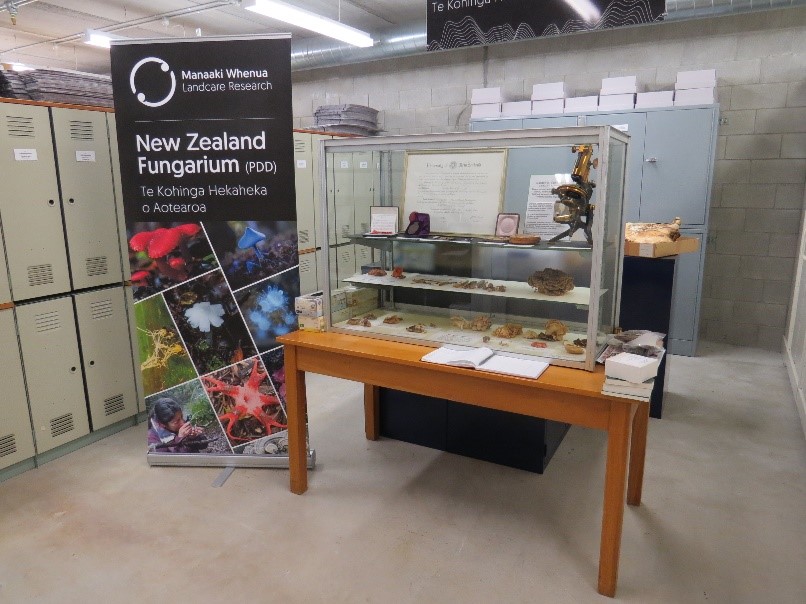Co-author: Peter Buchanan
This is the second instalment (first find here) in an exploration of the treasure chest that is New Zealand Fungarium Te Kohinga Hekaheka o Aotearoa (PDD), the national reference collection of dried fungi – today, display cabinet shelf 2.
One of our oldest collections is the orange bracket PDD 40760 Pycnoporus coccineus, which was collected by early naturalist and explorer William Colenso in 1850. We are fortunate to have over 400 Colenso collections and browsing through them is a way of travelling with him on his expeditions.
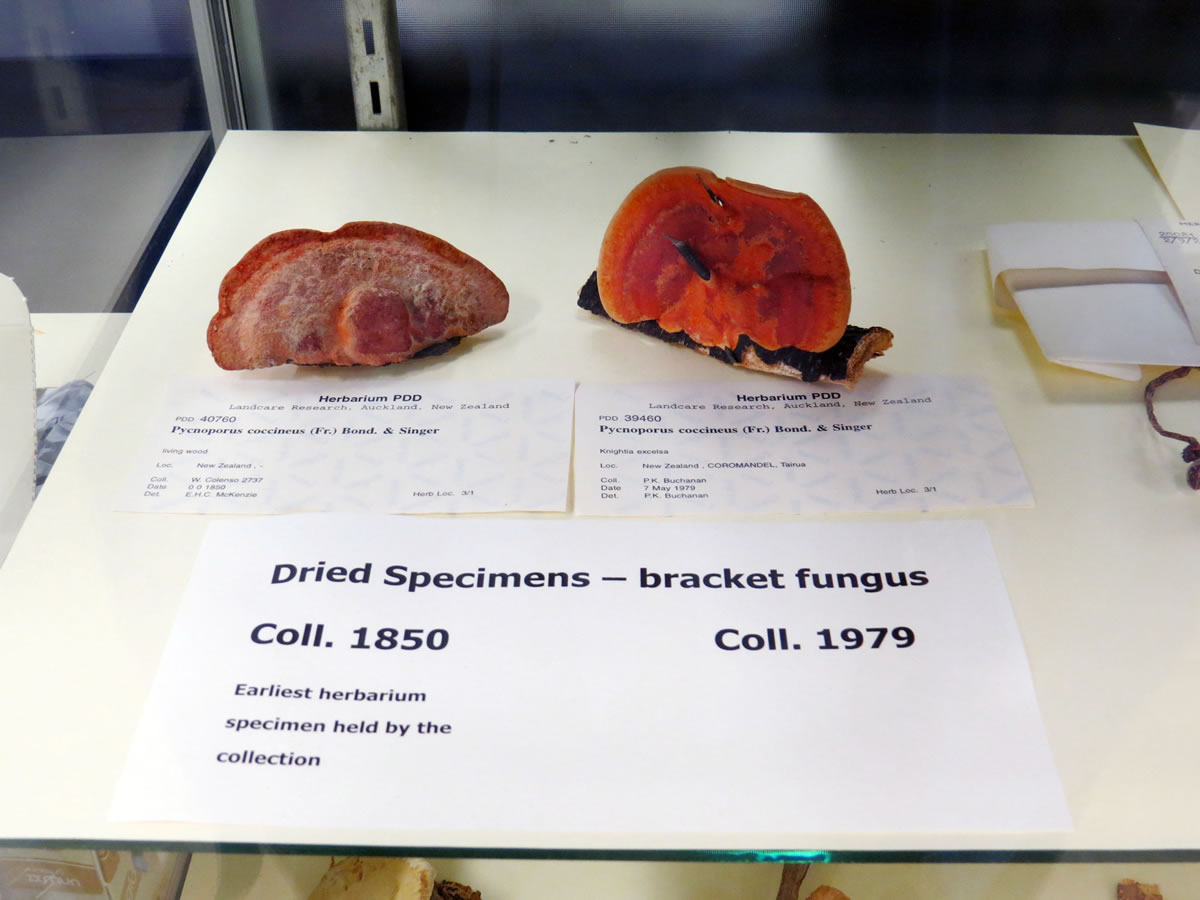
This particular Colenso specimen of P. coccineus is displayed next to a much more recently collected specimen PDD 39460 to show how simple drying of specimens achieves long-term preservation of fungal fruitbodies – the older specimen has just faded a little, while its microscopic detail (once rehydrated) remains visible to researchers.
The next specimen, PDD 20081, was buried treasure. Ophiocordyceps robertsii, āwheto, is an endemic fungal parasite of some species of large moth caterpillars in their underground burrows. When conditions are right, the long stalk-like reproductive structure grows up above the ground and the spores are released, ready for the next very hungry caterpillar to munch, then succumb.
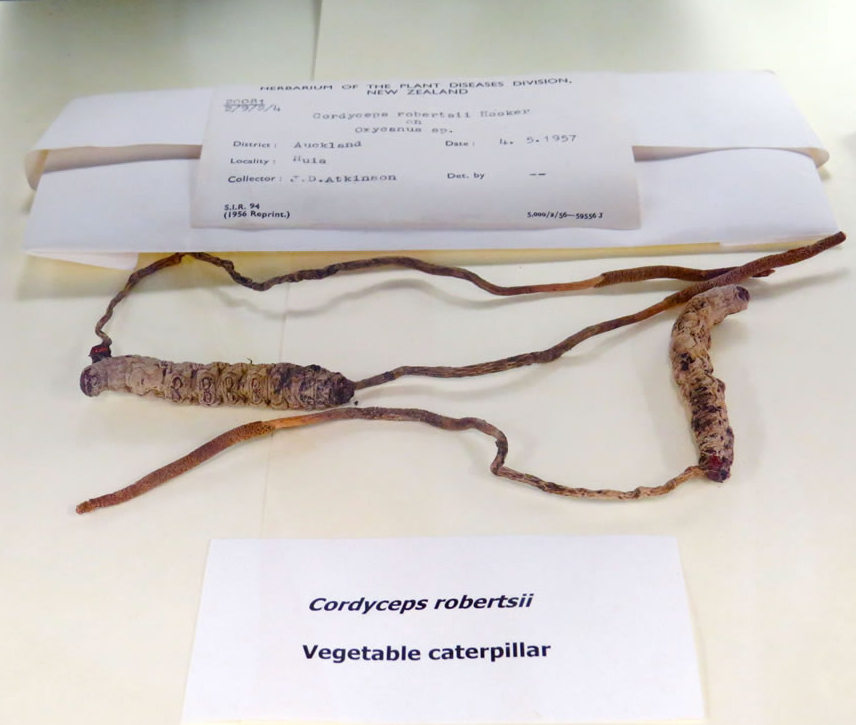
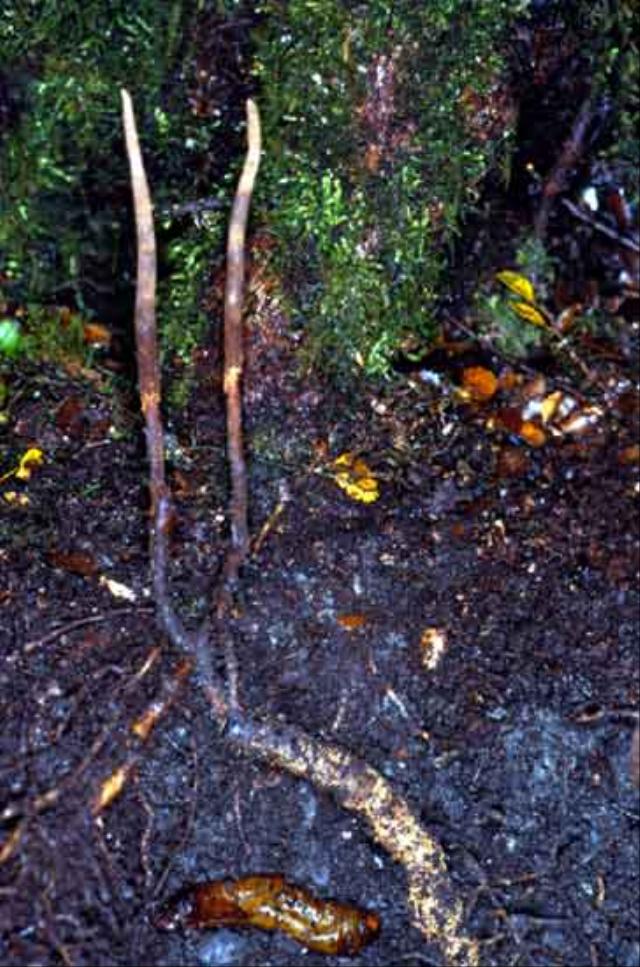
Māori harvested āwheto and developed a method to use them as a dye for tā moko (tattooing). You can learn more about Māori knowledge and uses of fungi online at Mātauranga Māori: Fungi as food and medicine and by downloading an educational resource, Ngā Hekakeka o Aotearoa, which was developed in partnership with iwi, using the resources and expertise at PDD, under MBIE’s Unlocking Curious Minds programme.
The remaining collections on this shelf show off some of the diversity of form exhibited by fungi. Bird’s nest fungi, Crucibulum laeve, disperse their egg-like packets of spores from the nest-like structures when raindrops fall and splash them out.
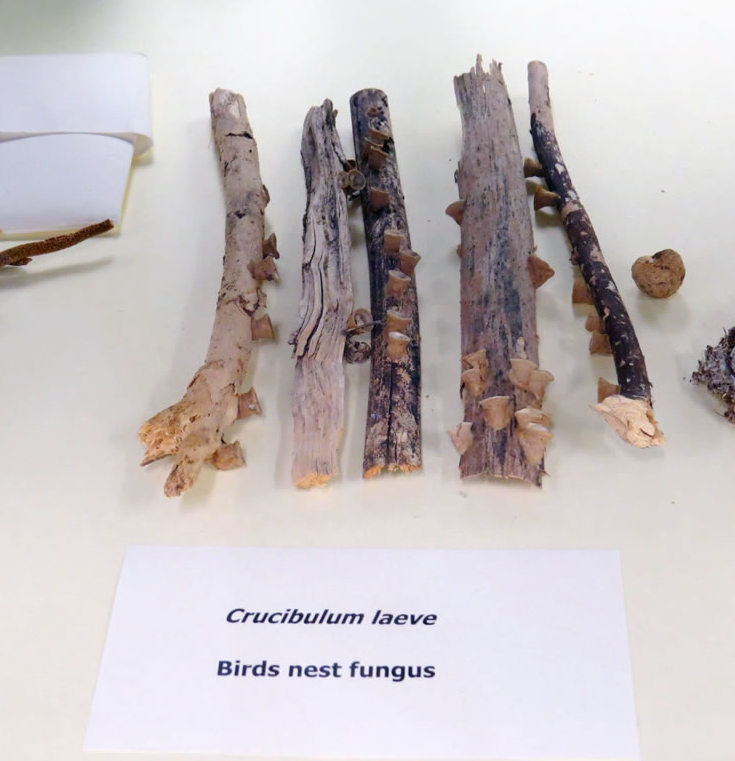
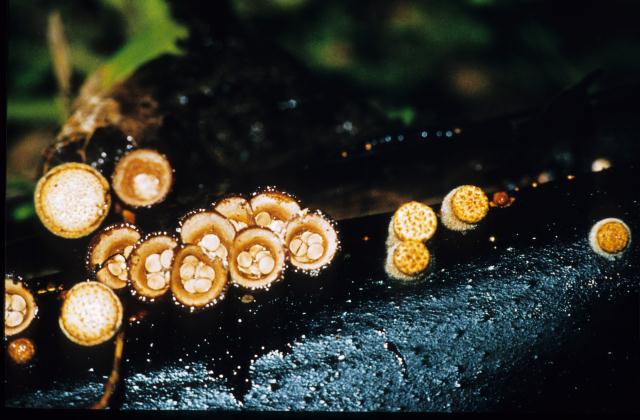
Earth stars develop from another, larger, egg-like fruiting body. The outer layers split and curl back to form a star shape when spores are ready to disperse through the central hole, puffed out under the action of raindrops – and even these spores are starry!
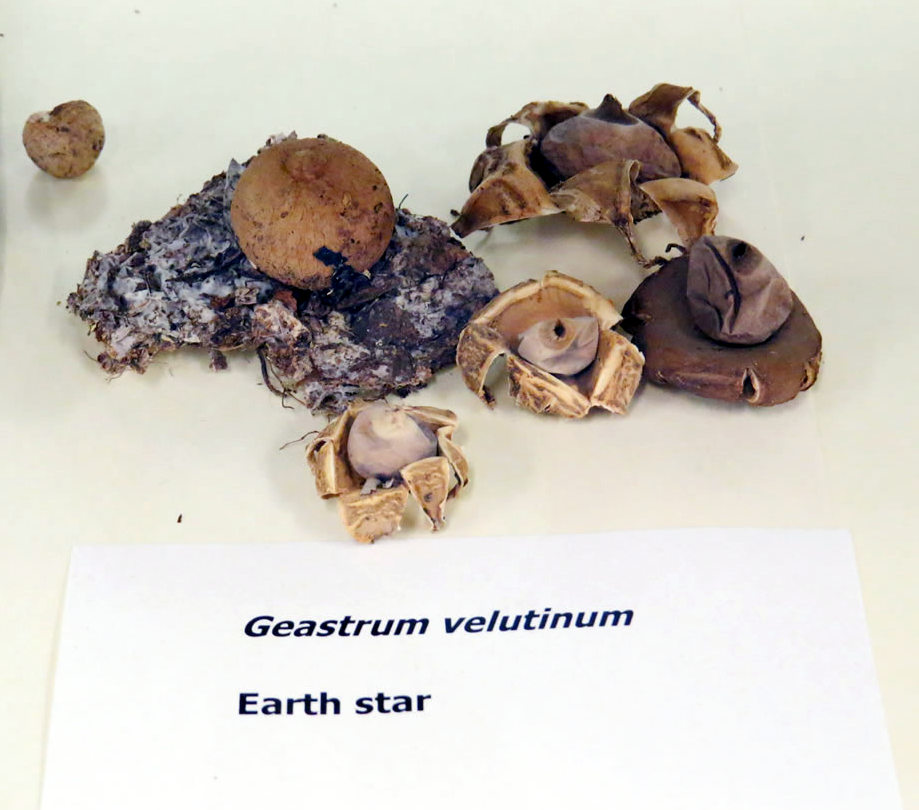
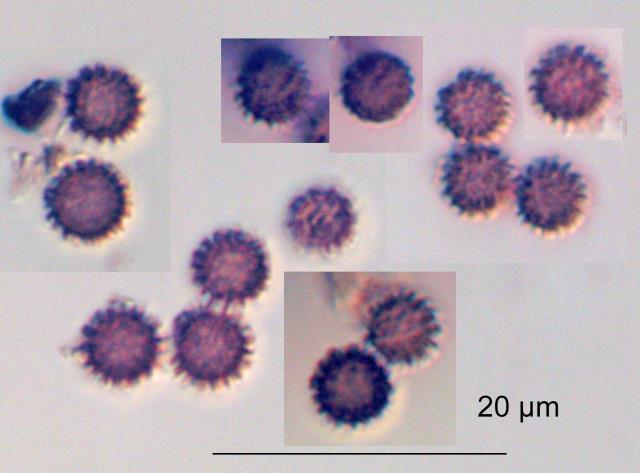
Another polypore, like the Pycnoporus above, this spectacular specimen is the rainbow bracket or turkey tail, Trametes versicolor. A non-specialist fungus which grows on decaying or dead wood and occurring worldwide, in New Zealand it grows on both native and introduced species.
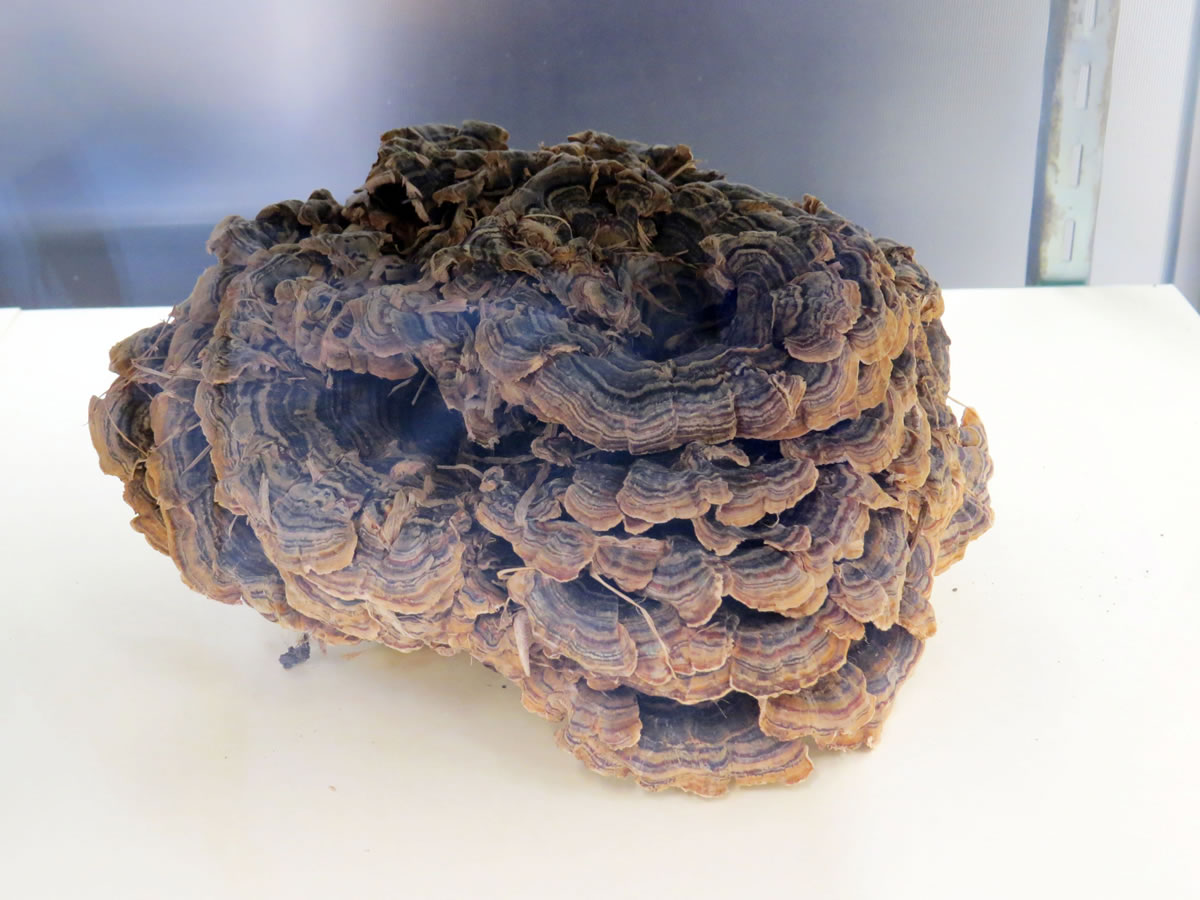

It is amazing to realise and remember that all these different fruiting bodies each develop from a little noticed thread-like structure, which is similar in form for all of them. This is the mycelium – masses of tiny white branched threads, or hyphae, which represent the feeding stage that grows through the wood, soil, or other material.
Look out for more about our fungal treasure in following blog posts.
Adrienne Stanton is the Collection Manager for New Zealand Fungarium (PDD) Te Kohinga Hekaheka o Aotearoa, at New Zealand’s environment-focussed government research institute Manaaki Whenua – Landcare Research. She is a councillor of the national mycological society, the Fungal Network of New Zealand. Her research interests are natural history collection curation and management, forest ecology and forest restoration science. Away from work, she is actively involved with a local stream restoration project as a councillor of Friends of Oakley Creek Te Auaunga.

